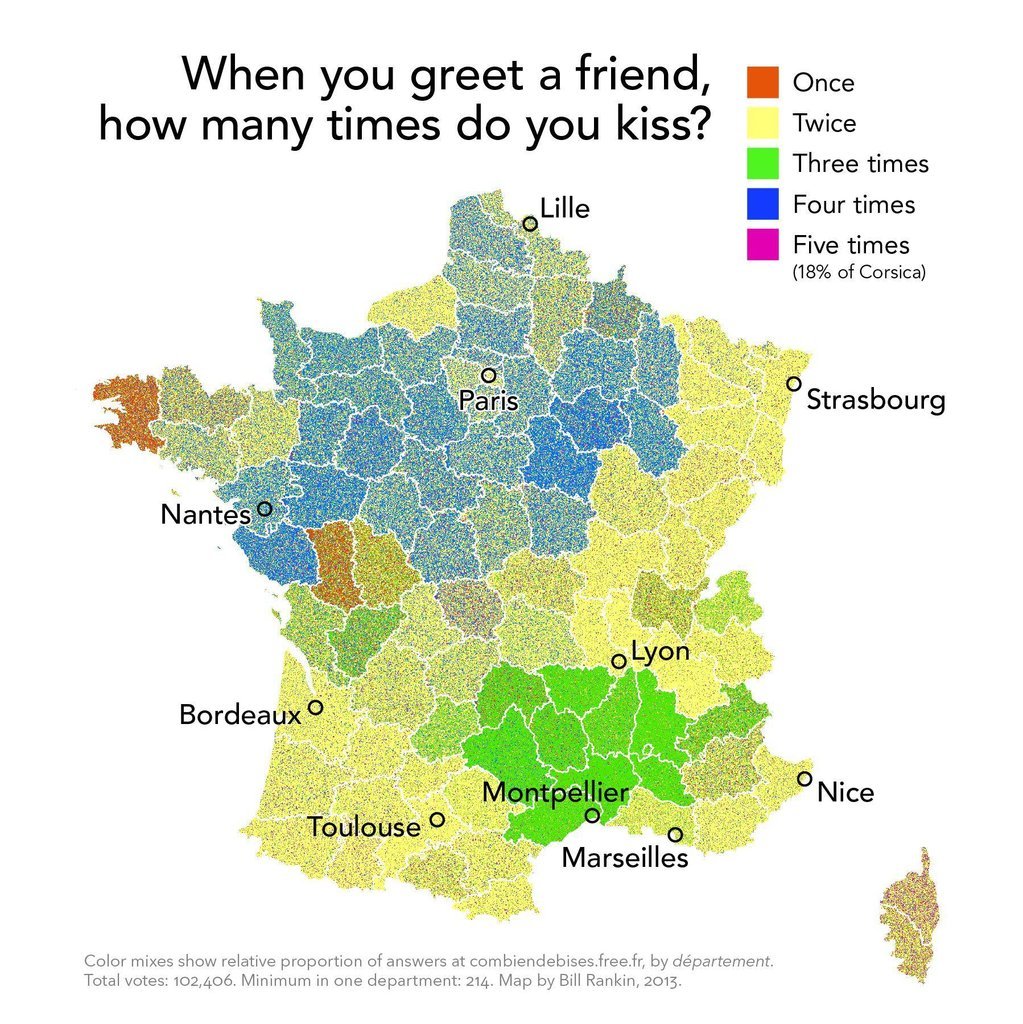“The most important thing in communication is
hearing what isn’t said” ~ Peter Drucker. Nonverbal communication is incredibly
vital when trying to relay or receive a message, especially between people who
do not speak the same language. Living in France for the past couple of months
has made me realize how imperative observing the unsaid can be in order to make
interaction more successful. But even beyond the interaction I receive on a day
to day basis, there is a code that only the true French person would know: the
cultural gestures. For example: the handshake. In the French culture the
handshake is short, sweet, and to the point. The conjoined hands go up, and
then down, that is all. With this method, the French might not seem as warm and
friendly as, let’s say, a Southerner with their arm clasp and a probable hug,
but they display their respect and firmness, and probably save time, which of
course is of the essence. The French increase their already high respect level
by extending their elbow or sometimes just a finger when their hands are full,
dirty, or wet, as to not inconvenience the other person.
An additional sign of reverence is sitting up
straight. Many Americans have a tendency to look like they are melting into a
puddle on the floor when they sit down and that is not acceptable for the
French, especially when they are in the presence of authority. From childhood
this procedure is ingrained in the young French minds to keep the tradition
alive.
Another gesture
that is popular in the French world is called the “bof”. This is raising the shoulders,
holding up the hands with the palms facing out, sticking out the lower lip, and
raising the eyebrows.
This versatile motion is so prevalent because of its
various meanings, including:
•It's not my fault•There's nothing I can do about it
•It's got nothing to do with me
•I don't know (anything about it)
•I doubt it can be done
•I don't really agree
The French also
consistently use a gesture referred to as “mon oeil”. Literally meaning “my
eye”, this motion is just the index finger lowering the skin under the eye.
Translating in English to “my foot”, “yeah right”, “you’re kidding” or “no
way”, this simple signal says a lot by just lifting a finger.by: Sarah Eldridge











